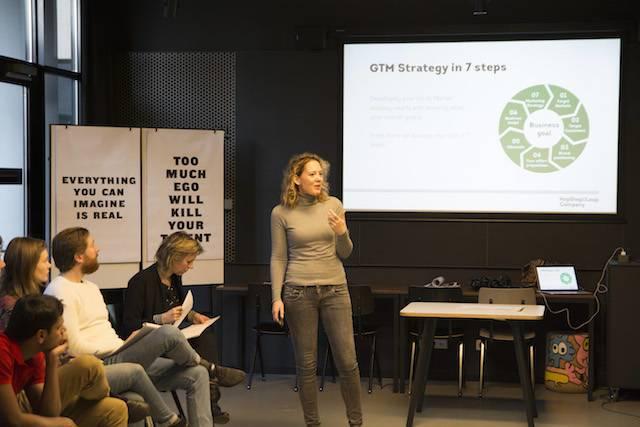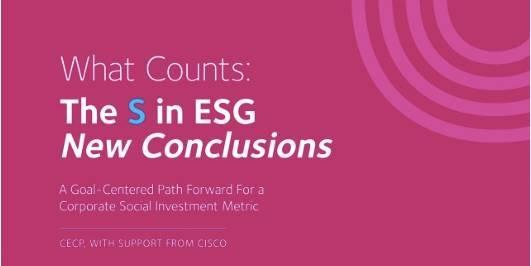Is the Commodity Era Over?


By Barry Parkin
I’ve recently begun to wonder if we’re moving away from the world of commodities as we’ve known them for hundreds of years. The buying, selling, trading and hedging of commodities like cocoa, grains and energy have been stalwarts of global trade. For decades, people in corporate procurement have sourced raw materials from around the world based on defined specifications and quality standards. We didn’t focus much attention, if any, on where these materials came from or under what conditions they were produced. Today that is changing and fast. More and more companies are working to align procurement with the environmental and social parameters that allow for sustainable growth. This alignment is leading many businesses to think differently about what, where and how we buy.
At Mars, we’ve been vocal about our belief that supply chains, the engines of global growth, are broken. To fix them, business needs to push boundaries and extend ambitions to the farthest reaches of our impact. We need to move beyond commodities that are bought and sold in markets where the lowest cost is the largest business driver. Instead, we must shift to long-term models for corporate buying that are anchored on building mutuality, reliability, resilience and risk management into the core of our buying patterns.
Here are five indicators that the commodity era as we’ve known it is over:
Long Leverage
Instead of looking at commodities as one-time and immediate purchases, leaders are embracing long-term investments. At Mars, this is exactly how we approach our renewable energy strategy. While many companies prioritize short-term electricity contracts, we are establishing long-term, country-level contracts in places like Mexico, the United Kingdom and the United States. We are saving money versus fossil fuels by lowering the risk to the developers and this is what creates a win for the planet, for the developers and for our business. Electricity is no longer a commodity, but a long-term investment within which business is a market maker not simply a price taker.
Radical Transparency Supply chain visibility is a key step in addressing the systemic environmental and human rights challenges facing industry. We are now in a transparency race, if you don’t know what you’re buying, where it comes from and under what social, economic and environmental conditions it’s being produced, it’s almost guaranteed to lead to public scrutiny. Twelve of the biggest consumer goods companies are now disclosing exactly where we source our palm oil. If you look at our lists, you’ll find over 1,600 mills! Every one of them potentially has social and environmental risks associated with it. So, while we are racing to embrace transparency, we also must accept that it’s time to radically simplify our supply chains and commit to buying from known and verified suppliers. Another indicator that procurement, as we know it, is changing.
Weakest Link
Once we know what we source and from where, it’s important for business to identify and fix the weakest links in supply chains to ensure long-term success. For companies that are largely dependent on agriculture, the weakest link is the millions of smallholder farmers that are currently living in extreme poverty across the globe. By working collaboratively on initiatives like the Livelihoods Fund for Family Farming and the Farmer Income Lab, Mars is seeking to identify the barriers to decent farmer income while also isolating and seeking to scale the interventions that work. When suppliers are able to source raw materials like mint, cocoa and rice in a way that lowers climate risk and increases opportunities for people to thrive, we lower our risk, while reducing our impact on natural resources and supporting the next generation of smallholder farmers. These kinds of sourcing practices require investment and they take time which means we are effectively committing to these growers for the long term. Yet another movement away from the traditional commodity approach.
Carbon Counts Addressing climate change requires action across supply chains – especially since supply chains can be responsible for many times the greenhouse gas emissions of a company’s direct operations. At Mars, for example, we have a carbon footprint that is roughly the size of a small country like Panama. Less than 10 percent of that footprint comes from our direct operations. The rest of our carbon footprint is embedded in what we source where it exists as an unaccounted cost. If you assume a carbon price is on the horizon, which I do, you must begin to factor a price on carbon in to everything you buy. Suppliers with lower carbon footprints will be the winners in this new marketplace. With this in mind, we see materials being defined by physical, environmental and social attributes; therefore not as commodities.
Mutuality Matters
But if this shift is necessary, how can it be done without adding additional costs and destroying our business models? We have found that if you focus on all parties in the supply chain doing well, or mutuality, then the costs can actually drop. By moving some of our rice sourcing to Pakistan, we were able to save 30% in the switch to a lower cost country, re-invest half of this back in on the ground activities that resulted in boosting farmer incomes by 30%, while improving quality and reducing water use by 30%. Another win-win-win.
Simply put, its good business to think beyond commodities and invest in supply chains that will help business become stronger and more resilient in the future. Every business has an opportunity to rethink our buying power by focusing on what and where we source, fixing our weakest links, factoring real costs into our pricing, and working collaboratively to advance long-term change.
This all points to the end of an era.
Barry Parkin is Chief Procurement and Sustainability Officer, Mars
Photo: Mars
Rainforest Alliance: New Merger May Strengthen Sustainable Agriculture Movement


For the two organizations, said Rainforest Alliance’s new CEO, Han de Groot, the partnership makes perfect sense. It brings together strengths that, for years, have been critical to reinforcing the fair trade mission.
“Both organizations have a long history of meaningful impact on sustainable agriculture and driving certification, encompassing strengths in varied sectors,” said de Groot.
Still, many member companies have had questions about how the merger will affect the fair trade movement. Just as concerning, how would it affect the certification and the participation of companies that had helped to nurture the two programs?
According to de Groot, who served as Utz’s CEO prior to the change, the merger offers members a “simplified certification landscape” with consolidated services under one roof.
The two organizations provide services for approximately 1.9 million farmers, including 182,000 coffee, cocoa and tea growers. De Groot said the merger is meant to acknowledge that the two organizations share similar geographies, both aimed at steps that will benefit the ecological well-being of the countries and regions they address.
Utz, which is known for its fair trade certification program, has also gained attention for its research and white papers on farming and other industries that impact the ecology. That vital skill came to Rainforest Alliance when the two companies joined forces. It is allowing the new organization to research apps for farmers, including in remote locations, study forestry management systems in Guatemala and come up with resources and economic models that will encourage youth to stay in their farming communities in Mexico, rather than to abandon the endeavor and seek out jobs in the city.
De Groot said the input they get from such studies is vital to Rainforest Alliance’s comprehensive work:
Increased amount of data and a larger evaluation and research team will certainly help the new Rainforest Alliance be a stronger player in the conservation sphere. More resources mean more synergies between our landscape conservation work and our forestry and agricultural supply chain work.
But it also endows Rainforest Alliance with another important skill: The ability to use that data, and the information they get back from their members, to modify certification programs to fit the regional and specific needs of their members.
“The new certification system will strengthen the capacity of companies to drive innovation throughout their supply chains - and provide a clearer path to do so. The merger will also allow the new organization to provide better, more flexible services to meet business needs,” explained de Groot.
He said they are still developing the draft standards for the certification, but when it is complete, members and other stakeholders will have an opportunity to offer comments.
“Once we establish what criteria this new standard will contain, we will guide producers through a step-by-step transition, allowing them enough time to make any necessary changes.” De Groot said many of the changes they are implementing reflect the information they received from stakeholders in 2017, prior to the merger.
The new certification program will also be “designed to maximize positive social, environmental, and economic impact, offering farmers an enhanced framework to improve their livelihoods while helping to protect the landscapes where they live and work.
“It will emphasize outcomes and adaptability to local contexts, organizational structures, and will reflect differences in farming activities in different locations,” De Groot said.
Fair trade products assume a modest but increasing share of today’s tea, chocolate and coffee market. Studies conducted by researchers in 2014 found that consumers do associate “fair trade” labeled products with better value and are often willing to pay more for the product. According to researchers from Stanford University, Harvard University and the London School of Business, studies showed that when a fair trade label was later added on to an established coffee product, purchases went up by about 10 percent. On the other hand, price inflation of non-fair trade products resulted in a decrease in sales.
The Rainforest Alliance merger, which aligns the skills of two well-respected fair trade labels under the same roof may help to propel that momentum as consumers look for ways to contribute to stopping habitat loss and climate change in the regions they most care about.
According to Giving USA, contributions to environmental organizations increased 7.2 percent (5.8, when adjusted for inflation) in 2016, suggesting that public concerns about conservation and vulnerable ecologies may continue to grow as climate change becomes a greater, and more concerning reality.
Applied diligently, Rainforest Alliance’s increased investment in research and white paper studies won’t just help build a resilient certification program. It may offer stronger resources for protecting the world’s most vulnerable forests against climate change.
Originally published in CR Magazine - Summer 2018Tackling Racial Bias at Work


Last month, two young men did what millions of consumers often do when they arrange to meet friends for coffee: They entered a Starbucks café, sat down and waited for the other member of their party to arrive.
And as you have probably already heard, they were promptly arrested. The manager called the police and had them escorted out in handcuffs.
Not surprisingly, the Starbucks corporation has been doing damage control ever since. The company has acknowledged that there is a perception – accurately or not – that black patrons are held to a different, more rigorous standard than white patrons. The coffee roaster is also aware that this perceived inequity is a public relations disaster for any corporation, especially one that has touted the sustainable development goals for years.
CEO Kevin Johnson’s announcement that the company would shut down all 8,000 stores and retrain its 175,000 employees against “racial bias” with a half-day corporate-paid training was applauded by many pundits, but Diversity & Inclusion experts expressed concern about the company’s quickly formed strategy and whether its corporate leaders understood that many consumers saw the arrests not as evidence of unconscious bias, but as a deliberate, racist action against people of color.
For Johnson, coming up with a program that will convey to consumers that the company is committed to racial equity and supports cultural diversity has become a moving target.
How Starbucks should teach its staff about racial equity and corporate diversity policies appears to be an ongoing discussion. According to the company, it plans to engage civil rights leaders to craft the workshop, and while it has offered names of some of the experts, as of press time it hadn’t clarified how it will ensure its staff ascribe to the lessons.
That’s a critical issue, says Nicole Sanchez, CEO and founder of Vaya Consulting, a firm that helps companies build healthy cultures. Sanchez also teaches at the University of California Berkeley Haas School of Business.
“I appreciate when a company says it explicitly wants to tackle racism. But there’s enough evidence about how to promote this agenda inside companies to suggest that shutting everything down for an afternoon and doing a mandatory training won’t yield the results that a company wants,” Sanchez said.
Effective [inclusivity] training should be thought of as part of ongoing education, not a one-shot solution to something that ails you.
In fact, she added, it may even exacerbate problems by creating more uncomfortable, ineffective interactions.
Starbucks learned that the hard way when its 2015 “Race Together” campaign, which paired baristas, coffee and a loaded question about how customers felt about race issues, was widely panned.
“Effective training should be thought of as part of ongoing education, not a one-shot solution to something that ails you,” Sanchez clarified. Still, she did agree that Starbucks’ idea of engaging experts on the issue was a good idea. “[There’s] a critical role for civil rights leaders to play in this conversation, in collaboration with those of us who specialize in promoting racial equity inside companies.”
But that isn’t alone, going to solve the problems, Sanchez added.
“If Starbucks wants to change the way their employees discuss, think about, and behave around issues of race and racism, they should consider a multi-part experience that allows employees to reflect in-between sessions. Starbucks’ current proposal is an incredibly expensive proposition for potentially very minimal impact.”
Several experts have weighed in over the past weeks to offer suggestions of just what a training program really should look like. But the sum total, said Sanchez, is that company training must incorporate all levels and aspects of the brand, from the top down. And it can’t just be about how a barista relates to black consumers.
“Training managers to build inclusive culture in their stores, training executives in their headquarters, training baristas to be intentional about inclusive customer experience...all of these interventions can and should continue and evolve over time.”
This isn’t the first time Starbucks has tried to build an inclusive culture -- its same-sex benefits and pay equity programs show that. But teaching its staff to apply those same standards of inclusion to their customers seems to be a harder challenge.
Businesses intent on demonstrating that they do follow sustainability principles and endorse diversity and inclusion must be willing to back up that claim with adequate funding and training that address long-term outcomes and take into account potential staff turnover.
“My top piece of advice to companies is to give real budget for D&I efforts and hire experts of color who do this work professionally,” Sanchez offered. This should be an ongoing part of the company’s sustainability strategy, not just a kneejerk response to an incident.
But the uncomfortable truth, Sanchez and others say, is that Starbucks “must recognize and acknowledge that the root of this incident was anti-black racism.” It is not the first, nor the last incidence of such. Only through facing this reality, Sanchez posits, can real change occur. She recommends Starbucks engage black consumers in the audit process by seeking feedback and suggestions, involving executives in those reviews and making sure they are willing to take action. Only with a fully engaged staff will the company’s comprehensive diversity principles be followed up and down the org chart.
In today’s business arena, where public relations incidents can hit social media before the company has a chance to investigate the incident, continual education is crucial.
“Continued education will help employees to feel confident having these conversations and delve deeper into the nuance of a complicated topic. But the key is, Starbucks can’t just limit this education to the stores: If it’s not happening at corporate headquarters, it won’t work,” Sanchez said.
Image via Pexels
What Design Can Do and the Climate Action Challenge: The Product of Ideas


Mission: Impossible
The challenge, should you decide to accept it:
“Make the huge – and for many people abstract – issue of climate change tangible and understandable, while at the same time offering potential and practical solutions.”
In the iconic 60s American television series Mission: Impossible, the task every week was simple: accomplish the impossible. The premise revolved around a diverse team of competent, confident, and dedicated individuals willing to take on each week’s new “impossible” task.
The lesson? What may seem impossible isn’t. Difficult in ways never before imagined? Of course. But with enough daring, creative thinking, and singular perspective, we can push the barrier of “impossible” much further than we think.
With this compelling stamp of optimism, for all who would accept it, the Climate Action Challenge launched in May 2017.
The three stages of response to climate change
When Amsterdam-based research and technology initiative What Design Can Do laid down its challenge in May 2017, they minced no words:
“Climate change is inevitable.”
Indeed, the luxury of time for sidestepping our predicament is long past. Earth's vast workings operate at a scale beyond common perception. Anthropogenic climate change is here and it's coming, already baked into the system. What to do? I argue that there are three broad categories of human response to climate change:
- Abdicate: Simply wring our hands in surrender to the inescapable catastrophe we’ve brought upon ourselves, selling out future generations by our lack of will;
- Reject: deny there is a problem. Full speed ahead.
- Face it: look squarely at the situation before us and not see so much as a problem (which it is), but more of a challenge, even an opportunity, to make a better world.
Of these responses, the first, untempered, is defeatist and weak; the second, foolhardy and dangerous; the third option sustains hope for that better world, organizing action by understanding and accepting our responsibility as a species, much as we expect of the individual beings within it.
So let’s focus here on the third response: action and opportunity.
GPS for good ideas
Now more than ever - and in ways we never could have imagined until we all got iPhones - humans huddle around the proverbial campfire for warmth and a sense of security in an uneven world. We lament a vague sense of unease, of existential fear, and rail on as to what someone should do about it.
Navigating the seemingly intractable problems of our world today, let alone what's ahead in the coming decades, demands more than infusions of cash or endless government interventions programs. Don't get me wrong, business, economics, and sound governance are ultimately the mechanisms for change in a neoliberal, globalized economy. But if the gears grind away with outdated, ineffective models, nothing really changes.
What is different than ever before is the scale and nature of the social transformation to which we must apply the power of change. In many cases, we must design our way out of failing designs of the past.
We need new ideas that fit within the context of the 21st century. It doesn't take an Elon Musk, either. We all have ideas to contribute.
The hard truth is that there are ideas and there are products. Products sell. Ideas, of themselves, are utterances around the global campfire. One could argue that most products are bad ideas in the end. Certainly, not all products are good ideas, but could it be that for a good idea to have a real impact in the context of liberal capitalism, emerging economies must, at least in some sense, become a product?
How do we find the good ideas and turn them into valuable products?
Just do it
We are immersed in design. That seems obvious on the face of it, but much like the fish unaware of the water in which it swims, we move through the world unmindful of the layers of inner belief and external structure that culminates in accepted reality.
But we must design for a new reality, learn to swim unfamiliar waters. This is the motivating drive behind Amsterdam-based What Design Can Do: through the creative possibilities of thoughtful design we can shape our world and what we hope it to be.
When Founder Richard van der Laken started WDCD, he sought a way to focus the disparate, often diffuse creative energy of visionary thinkers and the preternaturally optimistic perspectives of creative designers. Laken and his colleagues recognized that designers must be allowed to push into new frontiers. Social change happens when old boundaries are set aside in the pursuit of new ones.
What sprang up from the beginnings of WDCD was a global, collaborative, multi-disciplinary community of designers, entrepreneurs, business leaders, and NGOs, cross-pollinating ideas, showcasing best practices, and, oh yes, issuing challenges.
The Climate Action Challenge
So, back to our "impossible mission" - climate change is inevitable.
In May of 2017, WDCD, in partnership with Ikea and the Autodesk Foundation, WDCD issued its global Climate Action Challenge, calling on designers and creative thinkers to submit their best ideas for confronting climate disruption, especially in the world's poorest and most vulnerable regions.
“The collaboration with IKEA Foundation and Autodesk Foundation is unique,” says van der Laken in an Architecture Lab interview.
"We don’t just reach out to the global creative community to come up with solutions, together we also have real developing power.”
Three categories of participants, students, creative professionals, and startups, were invited to submit their best ideas relevant to their communities, passions, or areas of expertise. Recognizing the imperative of mitigation, the organizing principle of the challenge centered on adaptation "to the unavoidable impacts of climate change".
In all, WDCD received 384 entries from 70 countries. In September, a selection committee nominated the 35 most promising designs. With feedback from WDCD, the nominees had until November to refine and resubmit their ideas for the final round in São Paulo, Brazil.an international jury. A "broad swath" climate experts, business leaders, philanthropists were charged with the unenviable task winnowing 35 nominees to 13 finalists.
"it's a completely different way to analyze opportunities," Joe Speicher, Executive Director of the Autodesk Foundation and one of the judges in São Paulo, told Triple Pundit in a recent interview.."The way that an architect would analyze an opportunity is completely different in the way that myself as a funder would look at opportunities. And so we had a very interesting melding of the minds."
Designing the design challenge
Speicher admits to generally being "skeptical" of design challenges. A nice academic exercise, perhaps, but hardly game-changing.
"I think a lot of design competition tends to be a lot of wasted work," says Speicher. "Folks do their design schematic, mockups, CAD drawings, whatever.
"They submit it, the top three are chosen, and you're done."
It is this design challenge "vacuum" that the WDCD works to address.
"What we're talking about with What Design Can Do is how do we programatize this.. and really get people to engage on a much greater degree," says Speicher.
"The way that I see this is that we need a lot of options on the table to solve our existential climate crisis. And the more that we can get different communities thinking about this and engage with it as a topic the better."
Engagement goes both ways. At each step of the process, entrants received feedback on why a particular design did or didn't make it to the next step.
"The big opportunity is to get more folks thinking about (climate change), taking the best ideas and helping them come to fruition, which is the idea behind the accelerator program," Speicher says.
"That is very valuable in terms of making sure that it isn't just purely academic."
Accelerate
For the past five months, each of the finalists has honed their ideas alongside a team of experts guiding a customized accelerator program developed in partnership with Social Enterprise NL and STBY. A fast-track for turning ideas into products.
On May 24 in Amsterdam, each finalist presents prototypes and business plans to the world. A year-long process from the call for ideas, to the presentation of those ideas as developed solutions, ready for prime time in the marketplace of ideas.
Be the Lever
One of the biggest impediments to adopting a wholesale global response to global warming is the sheer scale of the challenge. Entire nations, let alone individual citizens, claim that, all by themselves, they are inadequate to the task. They’re right. Human collaboration is the essence of how tackled every existential challenge. Nobody goes it alone.
But at the same time, they’re wrong.
The history of our planet and our species is non-linear. Delving into a discussion of the philosophy of history is above my pay grade. I argue, however, that both natural and human history is marked by tipping points; watershed events that changed everything henceforth. A lone researcher, artist, or thinker with a vision unseen by most, could feed the spark of an idea that changes the course of humanity. But if that idea languishes in obscurity, who will know?
For any good idea to flourish, it must be supported by a community of like-minded thinkers.
“A pessimist sees the difficulty in every opportunity; an optimist sees the opportunity in every difficulty.”
― Winston Churchill (attributed)
Finalists of the What Design Can Do Climate Action Challenge
Creative Professionals:
- Artificial Glaciers: Artificial ‘ice stupas’ that store glacial meltwater in a form that makes them melt slower in spring, so water is available when it is most needed.
- The Children’s Scrappy News Service: This project takes the weather report as a starting point to change children’s view on how we should adapt to the changing climate.
- Dronecoria: An automatic reforestation project that uses customized DIY drones to disperse seeds.
- Keepers: Creates a space for scientists and local farmers to share a meal and discuss how land can best be used and revitalized.
- Power Plant: A greenhouse that––apart from food––also harvests energy from the sun.
- The Vertical University Project: A university along the slopes of the Himalayas in Nepal that encourages students to learn from local farmers about the deep physical and biological diversity of the landscape.
Start-Ups
- Backpack Radio Station: This portable radio station can help remote communities to become more resilient before, during and after natural disasters.
- Desolenator: This device offers a centralized solution to make water abundant in places where it is a scarce commodity.
- EvoCCo: This web-based platform can help change consumer behavior at the point of purchase by offering information to make the better choices.
- Students
- The Change Rangers: This project prepares the next generation with how to deal with a warmer world.
- Freewind: This project acts as an unplugged air conditioning unit for the thousands of heatwave victims in the slums.
- Nivara: This open source do-it-yourself solution creates carbon for water purification out of locally available biomass.
- Twenty: This project saves transport emissions by proposing to use ship detergents and other cleaning products without the water they usually are diluted in.
Sustainalytics, Morningstar Release New Tools for ESG-Minded Investors


Investors looking to determine the potential carbon exposure in markets have a bevy of tools at their disposal these days to keep them informed about the environmental, social, governance (ESG) performance of publicly held companies. Thanks to Sustainalytics and Morningstar, which just released two new products on the market, locating companies that commit to ESG factors will be all the easier.
This month the Dutch Sustainalytics unveiled its Carbon Risk Ratings, which tracks a company’s exposure and how it manages material carbon vulnerability.
“The Carbon Risk Rating captures a variety of carbon signals in a single, quantitative assessment designed to support investment analysis, decision-making and reporting” the company stated in a press release, noting that the program is designed to report on risks that aren’t necessarily available through more conventional methods of tracking a company’s carbon footprint.
“Given mounting regulatory and industry pressures around climate change, investors informed us they need deeper insights that go beyond carbon footprinting and that reflect a focus on risk and financial materiality,” explained Michael Jantzi, who serves as Sustainalytics’ chief executive officer. “Sustainalytics’ Carbon Risk Ratings symbolize our commitment to build and deliver innovative, high-quality products and services that support investors’ decision-making processes.”
The Carbon Risk Ratings program looks at more than 4,000 publicly listed companies that span some 147 industries across the world, with an approach the company says, that meets today’s needs for more informed research.
“A holistic view of carbon risk is required by investors today,” said Vikram Puppala, Sustainalytics’ associate director of Carbon Solutions. “Our Carbon Risk Ratings look at unmanaged carbon risks in a company’s operations and its products and services, offering investors a lens into the material carbon risks in their investments.”
Portfolios that demonstrate low carbon risk exposure and have low carbon ratings will also be featured on Morningstar’s Portfolio Carbon Risk Score. They will also receive the company’s Low Carbon Designation, which is designed to help investors quickly identify portfolios that support sustainable goals, such as the environmental benchmarks supported by the Paris agreement.
“Companies held within those portfolios tend to have low carbon emissions or are lowering carbon emissions in line with the goals of the Paris agreement in their own operations and by developing carbon solutions,” the company said in a statement.
And there is a reason for that, said Haywood Kelly, Morningstar’s global head of research. “Climate change will pose great challenges to investors seeking to balance their desire for high returns with a commitment to achieving a positive environmental impact. Given this, investors will need a means of more precisely analyzing their portfolio exposures to ensure they meet the realities of a carbon-constrained future."
The company bases its scores on the ratings assigned by Sustainalytics and are evaluated on a quarterly basis for any fund that has 67 percent or greater of its portfolio assets covered by Sustainalytics company-wide carbon-risk assessments.
Roughly 30,000 funds will be rated initially by Morningstar, with lower scores indicating lower carbon exposure risk. The company says it has found that EU (ex-UK) currently have the lowest scores, while Asia funds (ex-Japan) may have the largest. U.S. portfolios tend to fall in the middle. The firm did not offer any observations for Israeli portfolios, which have been gaining increasing attention by investment managers. The Tel Aviv Stock Exchange (TASE) also has its own set of SDG-rated indices.
Sustainalytics and Morningstar announced the release of the new carbon risk assessment tools at the 12th UK annual investment conference in London on May 1. More information about the companies’ latest tools available to investors is available through Sustainalytics and Morningstar.
Flickr image: Les Haines
A New Measure Captures a Company’s “Total Social Investment”


In a groundbreaking study released by CECP: The CEO Force for Good, the way companies calculate and report on their various programs and initiatives to improve society will fundamentally shift. In its report “What Counts: The ‘S’ in ESG, New Conclusions,” CECP, with support from Cisco, introduces an aggregated calculation called “Total Social Investment (TSI).” The calculation is a forward-looking reflection of the innovative ways companies invest in society. TSI offers a high-level and comparable snapshot for use by investors and other stakeholders to determine the value created by the “S” efforts in Environmental, Social, and Governance (ESG) measures.
“Leading companies have innovated in their social programs beyond what the traditional corporate social responsibility and philanthropy metrics measure,” said Daryl Brewster, CEO, CECP. “Today, companies view social investment as a competitive advantage. Total Social Investment provides companies a powerful tool to measure their work holistically. Under the notion that what gets measured, gets managed, Total Social Investment captures how companies are creating a better world through business.”
The TSI metric was created from company input after CECP published a flagship working paper in February 2017 and with support from USAA. That paper presented 40+ company case examples. Nine companies participated in a pilot to road test the TSI metric and help develop tools: CenterPoint Energy, Chevron, Cisco, Hershey, IBM, PayPal, Salesforce, Target, and USAA. In addition, a panel of eight leaders in the field participated in a Measurement Group of Experts and provided assessment and input in developing TSI.
TSI captures innovative initiatives that would have previously gone unmeasured: for example, new practices such as impact investing, the employment of individuals whose job it is to provide social services directly or collaborating with partners that aren’t formally organized non-profit organizations. TSI helps companies capture social investments beyond the donation of products or cash and takes into account the types of partners involved in social investment, the types of financial transactions companies undertake, and “shared strategies” that create both business value and social value. In addition, long-term-oriented investors will be able to evaluate a company’s management team assessment and management of ESG-related risks and opportunities.
CECP notes in the report that TSI works similar in principle to the way companies analyze their total investments in research and development. To calculate a company’s TSI, CECP summarizes seven categories of social efforts: Communities, Human Rights, Diversity (internal and external), Training, Health and Safety, and Labor Relations. The investments made in these seven business areas are then aggregated to determine company’s total investment of resources. It builds on the powerful, virtuous cycle of business rigor and benchmarking exhibited by CECP’s Giving in Numbers reports.
Companies affiliated with CECP, a coalition of more than 200 CEOs of the world’s leading companies that believe in creating a better world through business, reported struggling with the plethora of social metrics. In some cases, this was because traditional metrics didn’t account for innovations beyond donations. In other cases, previous measures separated out cross-departmental initiatives from the outcomes intended by such programs. For example, old metrics wouldn’t capture how a company manages its supply chain in order to promote human rights or health and safety.
“This work was inspired and shaped by business leaders who told us that their companies were doing so much more than what was being counted.,” said Carmen Perez, Director, Data Insights at CECP and lead author of the report. “Total Social Investment is their answer. It still allows the company to determine their best set of ‘S’ metrics individually, and then report TSI as the holistic summary that creates the platform for comparison.”
In recent years, companies have faced growing demand for data. According to a Goldman Sachs study citing Bloomberg data, the explosion of sustainability or ESG reporting has led to over six million data points being reported by companies across 450 metrics in 2016. TSI won’t replace existing reporting frameworks, such as the Global Reporting Initiative or Sustainability Accounting Standards Boards, or the metrics those frameworks outline. Rather, companies can use TSI to “roll-up” the many social investments they make regardless of the reporting framework and individual metrics they use.
Once the TSI measure is implemented on a broad scale, companies will be able to capture initiatives that currently aren’t reflected in many Environmental, Social, and Governance (ESG) metrics. Using TSI will also help business leaders and stakeholders cross-compare corporate social investment strategies between sectors and entire industries.
The shared goal is to get all companies to adopt the TSI measure by 2020. To help companies adopt the measure, the report includes suggestions on the ways in which current social metric frameworks – such as CECP’s own Valuation Guidance - should expand. The study also includes a decision tree tool to help companies categorize their investments.
The report is available for free after registration on CECP’s web site: www.CECP.co
General Mills Joins the Push for More Organic Food Production


General Mills is making more room for organic farming – 34,000 acres of room to start.
This March, the company that is best known for its cereal products like Cheerios, Wheaties and Kix announced that it would be creating its own line of transitional farming, in which conventional farming acreage is gradually converted to certified organic crops. During the transitional period, the company says it will use the crops to produce cereals and other foods under a “transitional label.”
The concept of transitional farming isn’t exactly new. Other organic producers like Lundberg Farms, best known for its organic rice products, had used transitional acreage to expand its organic options. And last February, General Mills’ competitor, Kelloggs, announced it was releasing its first transitional farming product under the Kashi label. The company says it is also working to develop more organic farms in the U.S.
According to the U.S. Department of Agriculture (USDA), less than 1 percent of commercial farms in the U.S. are certified organic. Large producers like General Mills are finding that’s not enough to supply the grain that is needed for their higher-tier organic labels, for which producers can generally command a better price.
Encouraging farmers to transition to organic has been challenging in recent years. Kashi says it’s because of the three-year process, for which farmers often feel they aren’t being compensated for.
But Robert Arnason, a writer for the Canadian ag publication Western Producer, has tracked the problem and notes that recessions can have a discouraging impact on organic farmers. Recessions, like the 2008 housing crash, cause consumers to tighten their belts, and organic choices can be one of the “luxuries” to be left out of the shopping basket. For small farmers counting on higher profits to offset their lengthy transition period, the downturn can be disastrous.
General Mills’ approach to developing more organic acreage may provide a bit more buffer against stock market catastrophes. Rather than relying on lots of little farms, some of which may have narrow profits margins, the corporation has turned to larger farms that can open up a bigger swath of acreage and may have the capital to sustain an unexpected hiccup.
For the newest investment, General Mills has turned to Gunsmoke Farms in South Dakota to develop organic crop for its Annie’s brand. The 31,000-acre farm was started by RD Offutt in 2012 and has been a main producer of conventional wheat. It isn’t clear where the other 3,000 acres will be established, but a section of the acreage about that size will also be set aside to grow pollinator habitat with the help of Xeres Society. The habitat helps to guard against erosion, provide cover crops and other foliage necessary in organic agriculture.
According to General Mills’ March 2018 press release, the 34,000 acres will be converted "to certified organic acreage by 2020." This leaves a niggling question for organic consumers: According to the USDA, it takes three full years to properly transition conventional acreage to organic. Did the company actually start the transition process a year earlier? Perhaps it means that certification will start in 2019? Or does the farm have ambitious hopes to transition the acreage ahead of standard 3-year processes?
General Mills hasn’t explained the methodology. But it does have a track record for building successful organic brands, including Muir Glen foods and Liberte dairy products. And it has a well-honed experience doing business with large and small organizations that are more than willing to help expand crops for North America’s insatiable organic appetite.
This latest effort to expand North America's cache of certified organic farms will dovetail with General Mills' newest plans to create new consumer-friendly methods to show it is being more transparent in its sourcing methods, as well as to highlight the small players that have helped to build General Mills' growing line of organic and transitional products.
Flickr images: Charles Knowles; Julie Magro
Blockchain Comes to the Diamond Trade


By Logan Yonavjak
A diamond is forever, but the negative impacts on people and planet don’t have to be. The diamond industry has been struggling for decades to make its supply chain more ethical, environmentally friendly, and transparent. Could blockchain technology be the solution we’ve been waiting for?
Blockchain technology, the same technology that underlies bitcoin, collects and records information -- including physical characteristics, source and history of ownership -- into an immutable digital ledger. This helps ensure the authenticity of information, making it more difficult to conceal corruption or counterfeiting along a product’s journey through the supply chain.
This is a useful innovation for the luxury goods market. Essentially, blockchain technology can be used to trace the origins and verify the authenticity of goods – and in the case of diamonds and other rare earth minerals, to ensure that they originate from sustainable sources.
The current industry standard is “conflict free” diamonds. However, jewelers that offer this standard are limiting themselves to the Kimberley Process’s definition, which narrowly defines conflict diamonds as ‘diamonds that finance rebel movements against recognized governments and applies only to the trade of rough diamonds. This is insufficient, claims Brillant Earth, because there are many other opportunities for abuse and human rights violations between the mine and the jewelry counter. The Brilliant Earth website notes bluntly “The Kimberley Process misleads consumers and does not attempt to stop the worst abuses in diamond mining.” Blockchain is the latest attempt to keep the diamond supply chain free and clear.
Brilliant Earth was founded in 2005 after co-founder Beth Gerstein struggled to find a responsibly sourced diamond engagement ring for herself. Beth partnered with her Stanford classmate, Eric Grossberg, who also believed that responsibly sourced jewelry could be an effective tool for social change. Thirteen years later, Brilliant Earth has emerged as a global leader of ethically-sourced fine jewelry and a leading e-commerce jeweler, with a mission to cultivate a more ethical, transparent and sustainable jewelry industry.
The company’s fine jewelry is handcrafted from recycled precious metals, and is set with beyond-conflict-free diamonds and colored gemstones that already meet high standards of social and environmental responsibility.
Initially, Brilliant Earth sold only Canadian diamonds, which were just becoming available at the time. Gerstein and Grossberg personally researched mining operations in Canada’s Northwest Territory.
Since then, the company has expanded their offerings to include gems from other points of origin.
In 2016, a third-party auditor conducted an independent verification audit of Brilliant Earth’s chain-of-custody protocols to verify practices to identify the country of origin for the natural diamonds Brilliant Earth offers from Canada, Botswana Sort, and Russia. In 2017, the company also hired a Director of Responsible Sourcing to focus exclusively on improving sourcing and auditing practices. Last but not least, the company takes back jewelry for recycling and actively engages with industry partners to identify opportunities to decrease waste and increase the available recycled content.
Blockchain technology provides another opportunity to further improve diligence and sourcing practices. In January 2018 Brilliant Earth partnered with Everledger, an emerging technology enterprise that uses a global digital ledger, enabled by blockchain technology, to securely track and trace the verified provenance of high-value assets, like diamonds.
Everledger is built with Hyperledger’s open-source technology and securely hosted within IBM. Media reports have also tied this technology to recent collaborations with Walmart and Maersk.
Since early 2018, Brilliant Earth and Everledger have been pilot-testing this system for Brilliant Earth’s supply chain to provide stakeholders with an indisputable history of authenticity and ownership along the market journey of a diamond.
“By integrating Everledger’s blockchain-based solution platform into Brilliant Earth’s existing due diligence practices, the company hopes to establish a next-generation standard for addressing social and environmental issues related to mining and manufacturing of gemstones and precious metals,” says Beth Gerstein.
This partnership comes at an inflection point for the diamond industry, given renewed criticism of the limited impact of the industry’s Kimberley Process (KP) certification.
Everledger’s approach will augment Brilliant Earth’s existing screening process. The company begins by carefully selecting the countries that supply their diamonds. Then, they use chain-of-custody protocols to carefully vet and approve each diamond supplier. Their diamond suppliers are required to demonstrate conformity to these chain-of-custody protocols in their supply chain, and verify documented due diligence of the origin of diamonds from countries including Canada, Russia, and Botswana.
By integrating Everledger’s blockchain-based solution platform into Brilliant Earth’s existing due diligence practices, the company hopes to establish a next-generation standard for addressing social and environmental issues related to mining and manufacturing of gemstones and precious metals--
Essentially, the Everledger blockchain system can enable the supply chain to more seamlessly and securely provide the necessary documentation and verification on origin, standards and practices. This application can extend from a particular mine or mining company to the broader diamond industry, including diamond manufacturers, gem laboratories, and wholesalers.
Over time, Brilliant Earth also plans to move into the application of blockchain into colored gemstones and precious metals. In fact, Everledger recently announced a partnership with Gübelin Gem Lab to utilize blockchain to drive further transparency in the colored gemstone industry.
While blockchain is a tool that can increase transparency in the industry, it will be most effective when implemented by multiple parties from private sector actors, government agencies, and non-profit organizations. Current due diligence systems can engage with blockchain to include their information and expand the reach of their data.
Other well-known players in the rare earths market are also getting involved in Blockchain. De Beers Group is also investing in a platform to span the entire diamond value chain in order to provide confidence and assurance for all stakeholders. The Antwerp World Diamond Center (AWDC), representing the largest diamond trade hub worldwide, has been in discussion with De Beers Group around collaboration around this platform.
The implementation of blockchain won’t happen overnight, but when it does, it will serve to enhance existing efforts toward responsible sourcing. Layering information on the blockchain will help validate how products flow through the supply chain and provide greater consumer assurance around responsible sourcing.
Originally published in CR Magazine - Summer 2018Pernod Ricard: Getting Rid of Plastic Straws is a Call to Corporate Responsibility


By John Tran
Plastic drinking straws are everywhere – in the soft drinks that we order with our meal, in the glass of water we’re served in a restaurant and the boxed juice sold in stores. They are even in the mixed cocktails that are served in bars and lounges. But these days, the sleek, plastic straw is best known for the environmental mess that is cluttering the world’s parks, beaches and landfills.
According to the National Park Service, more than 500 million straws are used in the U.S. each day. “Americans use these disposable utensils at an average rate of 1.6 straws per person,” says the NPS, straw users rarely understand the environmental impact of the sipper.
But in recent years there has been a growing effort by both businesses and environmental groups to curb that use – or at least find more environmentally friendly options to replace conventional plastic straws. A discarded plastic straw or stirrer isn’t just an inconvenient piece of litter in our environment. It can take literally hundreds of years to decompose.
“A straw, which is only used for 20 minutes, on average – can take more than 200 years to break down and often does not fully disintegrate,” the NPS points out.
In recognition of these environmental challenges, in January we at Pernod Ricard announced we would stop purchasing plastic straws and stirrers to adorn our Chivas Regal Scotch Whiskey, Absolut Vodka, Kahlua Liqueur and other specialty liquor cocktails. In their place, we are introducing drinks with alternative options, including drinks without straws or stirrers.
“We believe small acts have a big impact. We want to break the association that a cocktail needs a straw or stirrer to be complete – and we think mixologists would agree,” said Amandine Robin, Senior Vice President of Communications & Sustainability at Pernod Ricard USA.
The decision to reimagine the way we serve cocktails also reflects growing public support for more sustainable options on straws and stirrers from wines and spirits producers. Recently, we announced a collaboration with LOLIWARE, the inventors of an edible, hyper-compostable straw. By working together with innovative visionaries, we are able to create a movement that can extend beyond our ourselves and can make a significant impact for many consumers.
For us, the changing attitudes about plastic straws are a call to corporate responsibility – one that isn’t hard get behind, said Vanessa Wright, Pernod Ricard’s Group Vice President of Sustainability & Responsibility.
Our dedication to sustainability dates back more than 50 years, to the founding of the Paul Ricard Oceanography Institute on the island of Les Embiez, France. Paul Ricard launched the institute in 1966 in an effort to educate the public about marine sustainability and the dangers of pumping local refuse, or red sludge, into the ocean. Today the institute serves as a base for ecological research and public education and is run by Ricard’s granddaughter, Patricia Ricard.
“We understand that non-biodegradable plastic is having a detrimental impact on the environment and oceans, and it’s crucial we play our role in being part of the solution,” said Wright.
Our environmental goals are aligned with the United Nations Sustainable Development Goals and the straw initiative supports our plan to go zero-waste-to-landfill by 2030.
John Tran is Director of Sustainability & Responsibility, Pernod Ricard800 Hydrogen-Electric Semi Trucks Foretell The Future Of Logistics


The logistics sector has been the first to adopt hydrogen fuel cell electric vehicles as the most efficient way available to decarbonize, but so far that transition has been sparked mainly by the humble forklift. Now it looks like the industry is ready to step up its game into street legal territory, in a big way. Earlier this month Anheuser-Busch announced that it has pre-ordered hundreds of hydrogen fuel cell electric semi trucks -- 800, to be exact -- from the US startup Nikola Motors.
The sheer size of that order is interesting news for fleet owners looking to expand their decarbonization options. The EV company Tesla made a big splash last year by launching its first battery electric semi. Anheuser-Busch also put in a pre-order with Tesla a few months ago, but only for 40 trucks.
Why hydrogen is "the future of logistics"
Anheuser-Busch is clear on the decarbonization opportunities behind the deep plunge into hydrogen fuel cell technology. In a press statement, CEO Michel Doukeris noted that "the transport industry is one that is ripe for innovative solutions and Nikola is leading the way with hydrogen-electric, zero-emission capabilities."
The company is looking at reducing its carbon emissions from logistics by more than 18% through the adoption of 800 hydrogen trucks, helping to meet the company's 2025 goal of reducing emissions 25% across its value chain.
For those of you new to the topic, fuel cells convert hydrogen to electricity through a chemical reaction with oxygen (think H20 and you're on the right track). Aside from water, there are no emissions from a hydrogen fuel cell electric vehicle.
The advantage over battery electric vehicles is relatively simple: fuel cells can be refueled with hydrogen in about as much time as it would take to refill any other fuel tank. Fuel cells also offer a potential advantage in size and weight over battery packs.
The refueling advantage comes into sharp focus for warehouse operations, where the time and space dedicated to forklift battery recharging and swapping cuts into razor thin margins.
Anheuser-Busch also sees that advantage applying to long haul operations. The company anticipates refilling within 20 minutes, which will reduce idle time. The company also expects a safety advantage due to Nikola's "surround viewing" design.
On Nikola's part, CEO Trevor Milton makes it clear that his company is aiming to put the squeeze on the Tesla electric semi before it hits the ground:
Hydrogen-electric technology is the future of logistics and we’re proud to be leading the way...By 2028, we anticipate having over 700 hydrogen stations across the USA and Canada. With nearly 9 billion dollars in pre-order reservations, we are building to order, not speculation, and are very excited for what’s to come.
So, where is the hydrogen coming from?
Triple Pundit has been keeping tabs on Nikola since its launch in 2016, and the first thing we noticed was the company's plans for a network of fueling stations powered by renewable energy.That doesn't just mean keeping the lights on. Back in 2017, the company envisioned an initial network of 16 fuel stations that produce hydrogen on site, by "splitting" water with an electrical current.
Water-splitting is a green step up from the conventional source of hydrogen, which is natural gas. It also means that Nikola can take advantage of any available wind or solar energy to power the process.
With the Anhueser-Busch deal in hand, Nikola has stepped up its plans. The company is now aiming for an additional 28 stations in its network. Although that still may not seem like enough to cover the whole continental US, the truck's range of up to 1,200 miles cuts down on the need for large numbers.
King of the road: Tesla, Nikola or both?
With high profile entreprenuer Elon Musk at the helm, Tesla clearly has the edge over Nikola in terms of publicity.
However, Nikola's 800-truck partnership with Anheuser-Busch finally put the company on the public radar, and it has been making some moves that undercut Tesla where the rubber hits the road.
One example is Nikola's pledge to make its hydrogen fuel station network available to any vehicle. That's a contrast with the Tesla business model, which makes its battery charging stations available only to Tesla owners.
Back in April, Nikola teased news about a forthcoming deal that would enable it to accept pre-orders without requiring a deposit. Nikola also announced that it was refunding all previous deposits on pre-orders while reassuring those customers that they would still retain their position in line. That's another strike at the heart of Tesla's business model, which runs into thousands of dollars for deposits on pre-orders.
If Nikola comes through on its vision for water-splitting powered by renewable energy, that would be the icing on the sustainability cake.
Nikola vs. Tesla, round 1... and 2
The gloves really came off earlier this month, when word came out that Nikola filed a $2 billion lawsuit against Tesla in Arizona, claiming patent infringement.
The point of contention is the design of the semi cab. Nikola holds patents for several design elements that it alleges Tesla copied, including its unique wraparound windshield and mid-entry door.
That was just for starters. Nikola plans to leverage its truck refueling network to help kickstart the hydrogen fuel cell vehicle market for passenger cars, which would be in direct competition with Tesla's battery EVs.
Here's what Nikola tweeted out last week under the hashtag #emissionsgameover:
Each of Nikola's 700 hydrogen stations will produce up to 8,000 kg's per day. @Toyota,@Honda,@Hyundai, @audi, @Daimler or any other OEM that wants #hydrogen are welcome to fill at our 700 bar stations at around $6.00 per kg.#emissionsgameover
— Nikola Motor Company (@nikolamotor) May 7, 2018
It's certainly not game over for battery EVs, but it looks like the hydrogen economy is going mainstream in a big way now.
Although the rivalry may be causing heartburn among executives at both companies, the good news is that fleet owners will have more zero emission options to choose from in the near future.
Photo (cropped): via Anhueser Busch.